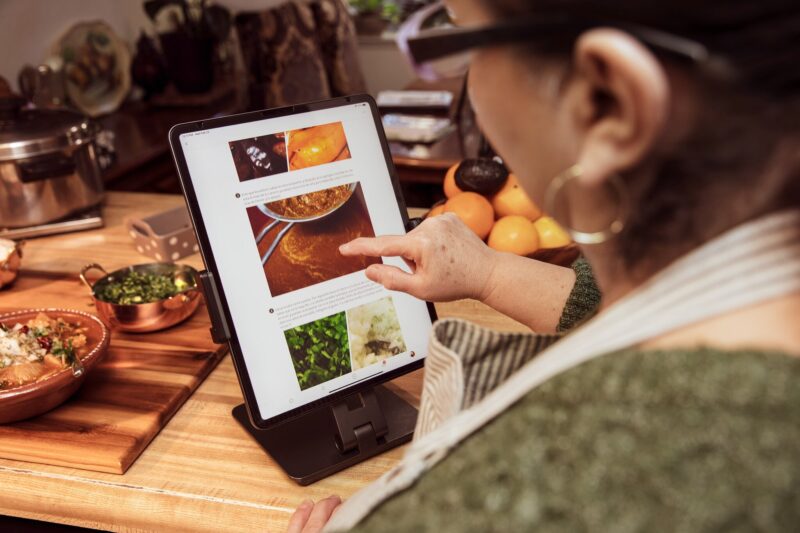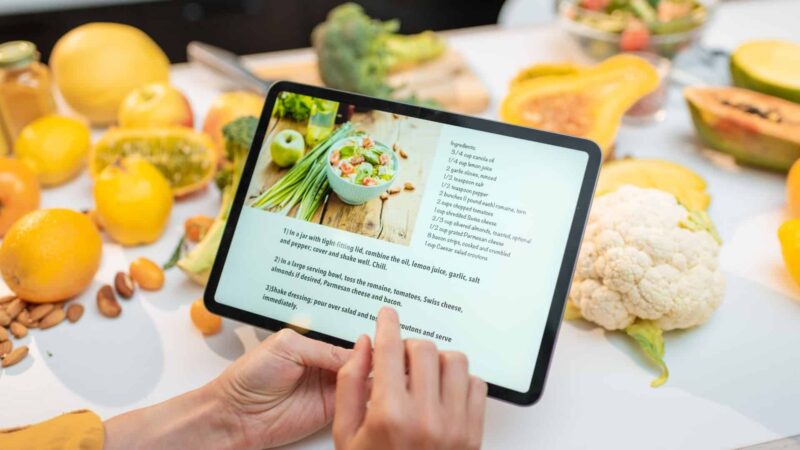The internet is flooded with recipes. Every scroll leads to another photo, another “secret ingredient,” and another blog post promising a life-changing dish.
But not all recipes are created equal. Some are tested, reliable, and easy to follow.
Others are messy, vague, or downright misleading. If you’ve ever ended up with a gummy cake or flavorless soup, you already know the pain of following a poorly written recipe.
Here’s how to cut through the noise and find recipes that actually work.
Key Highlights
- A reliable recipe starts with clear, specific instructions and ingredients.
- Authentic results come from recipes that include timing, temperatures, and exact measurements.
- Clarity and structure are strong signs the recipe was tested properly.
- Well-written intros often reveal the experience of the cook behind the post.
- Photos and videos alone aren’t proof—look for signs of hands-on testing.
- Tools like an AI checker help spot content likely written without real cooking experience.
Clear Language and Cooking Logic Signal Quality

Poor recipes often use vague terms. “Cook until done” or “add some salt” won’t help a beginner or even a seasoned home cook.
Good ones walk you through each step with intention. They avoid guesswork and use logical sequences that reflect how cooking actually works.
Experienced recipe developers will always use:
- Actionable instructions like “Simmer uncovered for 12 minutes.”
- Exact measurements (e.g. 1 ½ teaspoons of ground cumin).
- Precise tools (e.g. “Use an 8-inch nonstick skillet”).
Vague, recycled, or AI-generated instructions often lack this level of clarity. If a recipe’s steps feel random or out of order, trust your gut—something’s off.
Bonus Tip: Use a reliable AI checker to see if the recipe content was generated by artificial intelligence.
Many recipe websites pump out articles fast using automation. This tool helps identify if the text lacks human input, which is crucial when trusting advice for cooking.
Ingredient Lists That Respect the Process
Well-written recipes use ingredients with purpose. If something is added just to appear fancy or trendy, it shows. If the recipe calls for six different spices, but they all blend into nothing, that’s another red flag.
You can spot a well-tested recipe by:
- Logical ingredient flow that matches the prep steps.
- No filler ingredients that don’t impact texture or flavor.
- Minimal reliance on hard-to-find products unless they are essential.
Sloppy recipes often repeat ingredients unnecessarily or call for things like “herbs” without saying which ones. Pay attention to structure.
Does the ingredient list match the instructions? If not, the recipe likely wasn’t tested carefully.
Strong Introductions Show Real Experience

Ignore the fluff, but read the intro. A short paragraph that tells you why the recipe works, what inspired it, or when to serve it shows the author has cooked it more than once.
That kind of insight doesn’t come from copying another blog. It comes from actually standing in front of a stove and taking notes.
You’ll know you’ve found a serious cook if the intro gives:
- Substitutions based on experience, not guesswork.
- Specific mistakes the author made and fixed.
- Personal insights into texture, timing, or flavor.
Writers who haven’t cooked the dish rely on generic intros filled with lifestyle filler or keywords. Real cooks talk about burning the first batch or adjusting the spice to suit their kids. That honesty builds trust.
Measurements and Units Must Be Consistent
Trustworthy recipes don’t switch between grams and cups without warning. They use consistent units and provide conversions only when helpful. That’s because developers know how critical accuracy is in baking, and how a sloppy conversion can ruin your result.
For example:
- A tested cake recipe won’t say “a stick of butter” if it also uses grams for flour.
- A soup recipe won’t say “a handful of spinach” and then “use 150g carrots.”
If you see a mix of vague and specific measurements, step away. Consistency signals professionalism.
Comment Sections Can Reveal the Truth
Scroll to the bottom. Comments expose everything. You’ll often find:
- Users saying the timing was off or the texture didn’t match the photos.
- Helpful tweaks made by other readers that fixed the recipe.
- Direct replies from the author, which shows involvement.
Avoid recipes with zero feedback or ones where every comment sounds like spam. A comment section full of useful feedback means real people cooked the recipe. That’s what you want.
Photos Must Match the Process, Not Just the Final Look

A single perfect photo proves nothing. Even a stock photo can make a bad recipe look good. What you need to look for is step-by-step visuals that match the text.
Great recipes include:
- Images of dough before and after kneading.
- Comparison photos to show when meat is “lightly browned.”
- Close-ups of textures, not just plated dishes.
Too many photos of styled dishes with no cooking context usually mean the recipe is for show, not for use.
Avoid Recipes with Overloaded SEO Keywords
Some food blogs care more about clicks than results. You’ll notice:
- Long-winded paragraphs filled with keyword phrases like “best gluten-free dairy-free banana bread recipe.”
- Repetitive phrasing meant to hit search terms, not help cooks.
- Generic sentences copied from other websites.
This kind of stuffing signals content that wasn’t crafted by someone who loves food. It was made for traffic. Trust recipes with tighter writing that focuses on instruction, not stuffing in search terms.
How Artificial Intelligence Can Blur the Line

Artificial intelligence has its place in tech, but it’s being misused in recipe publishing. Some sites use tools to auto-generate instructions without testing anything in real life. That results in:
- Steps that don’t match the ingredient list.
- Timing that makes no sense.
- Reused instructions across totally different recipes.
Many of these auto-generated posts pass as human-written, but they lack the detail only real cooks include.
That’s where the AI checker becomes useful. It spots patterns, phrasing quirks, and sentence structures that hint at non-human writing.
If a site pumps out dozens of new recipes daily, it’s worth using the tool before wasting ingredients.
Final Signs That Confirm Recipe Testing
Let’s wrap with the clearest signals that someone tested the recipe in a real kitchen.
Look for:
- Specific brand or product recommendations (e.g. “use San Marzano tomatoes”).
- Notes on altitude adjustments or stovetop heat levels.
- “Optional but recommended” ingredients that are justified in the notes.
- Multiple variations listed with cooking times for each.
- Tips for storage, freezing, or reheating.
These details come from trial and error. Lazy or machine-generated recipes won’t include them.
Conclusion: Your Time and Ingredients Deserve Better

Not every recipe online is garbage, but most aren’t worth your time. When you invest in a new dish, you’re not just following steps—you’re trusting someone’s process.
Make sure they’ve actually cooked the food.
Next time you’re hunting for your next dinner idea, slow down. Check for the signals.
Use your judgment. Use an AI checker to verify content. And never settle for a recipe that doesn’t respect your time, your ingredients, and your love for food.

